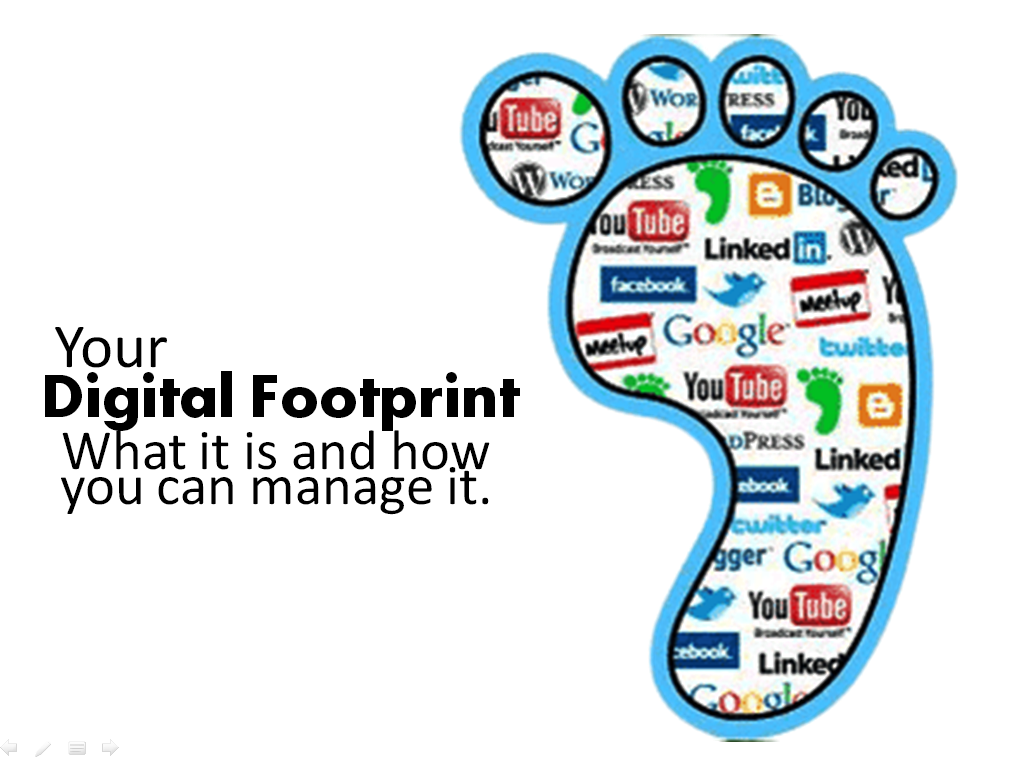Nearing the end of classes of my first block in the education program, I was asked to think about the importance of digital citizenship and my digital footprint. Before I could do this, I had to look more in depth into what both of these terms mean. Media Smarts defines digital citizenship as “the ability to navigate our digital environments in a way that’s safe and responsible and to actively and respectfully engage in these spaces”. It goes on to explain that although most people think about their actions in the online world through the same lens as they do in the offline world, this isn’t always the case. Carelessness can occur online and this causes people to act quickly, often without thinking about how these actions could affect their reputation both online and offline. To be responsible digital citizens, Media Smarts states that every person needs to have a sense of community-building and empathy online, as well as to always remember there is a real person with real feelings sitting on the other end of a screen. It is important to treat people respectfully and to stand up for others when you see they are not being respected. Every person must also use technology in a positive way and must be aware of how to manage their own individual rights, privacies, and ethics they have in the online environment. As a child, I always remember being taught by my parents to treat others the way you want to be treated both online and offline, to always keep social media accounts private so you have control over who can follow you and who can’t, only add people you know onto these social media accounts and deny friendship to anyone I may be unsure about, and more. I recognize that not every child is lucky enough to have the luxury of this information so as a teacher, I think it is going to be important for me to teach effective digital literacy in my classroom. I wish to ensure students have a successful start on the path to becoming responsible digital citizens who can protect themselves and their identities online, and who can act the same way they do online and offline both morally and ethically.
Now I turn my attention towards digital footprint. Kaspersky defines a digital footprint as “the trail of data you leave behind as you use the internet”. This trail of data includes posts on social media sites, but it also includes websites you visit, emails you send out, and information you choose to include in an online forum of any sort. According to Kaspersky, there are two different types of digital footprints- active and passive. Active digital footprints occur when the user deliberately shares information about themself online through something like posting on social media. Passive digital footprints occur when information is being collected pertaining to the user without the user’s knowledge that this is occurring in the first place- this is like when you see targeted ads on Facebook for things you have talked about or looked at on your phone before. I was always taught by my parents to think before I post something online because once I post, it becomes permanent and I no longer have control over it or over what others will think about it. I was also taught to think about if I want my future employers to see what I post and if what I post represents my true identity because social media identity has become just as important as real identities in society today. Owing to my parents’ influence, my opinion would be that I have a very positive digital footprint. I have always been careful about what I post and where. Therefore, if you google my name the most you would usually find is newspaper articles about my sports accomplishments. My desire is to make sure my digital footprint remains positive and to make sure I would be ok with anyone finding anything about me online, no matter who they were or what purpose they had for doing this. I again realize I was lucky to have guidance when it comes to creating an online footprint and persona, but I know that not all my students will have had this. It will be important to incorporate digital footprint knowledge into my classrooms so that I can show them what it looks like to have a positive digital footprint, and so that I can hopefully stop these students from making big mistakes that would tarnish their digital footprints and online reputations before it is too late.
Sources Used- https://mediasmarts.ca/digital-media-literacy/general-information/digital-media-literacy-fundamentals/what-digital-citizenship https://www.kaspersky.com/resource-center/definitions/what-is-a-digital-footprinthttps://educationtechnologysolutions.com/2018/07/what-online-persona-digital-citizenship-teachers/






